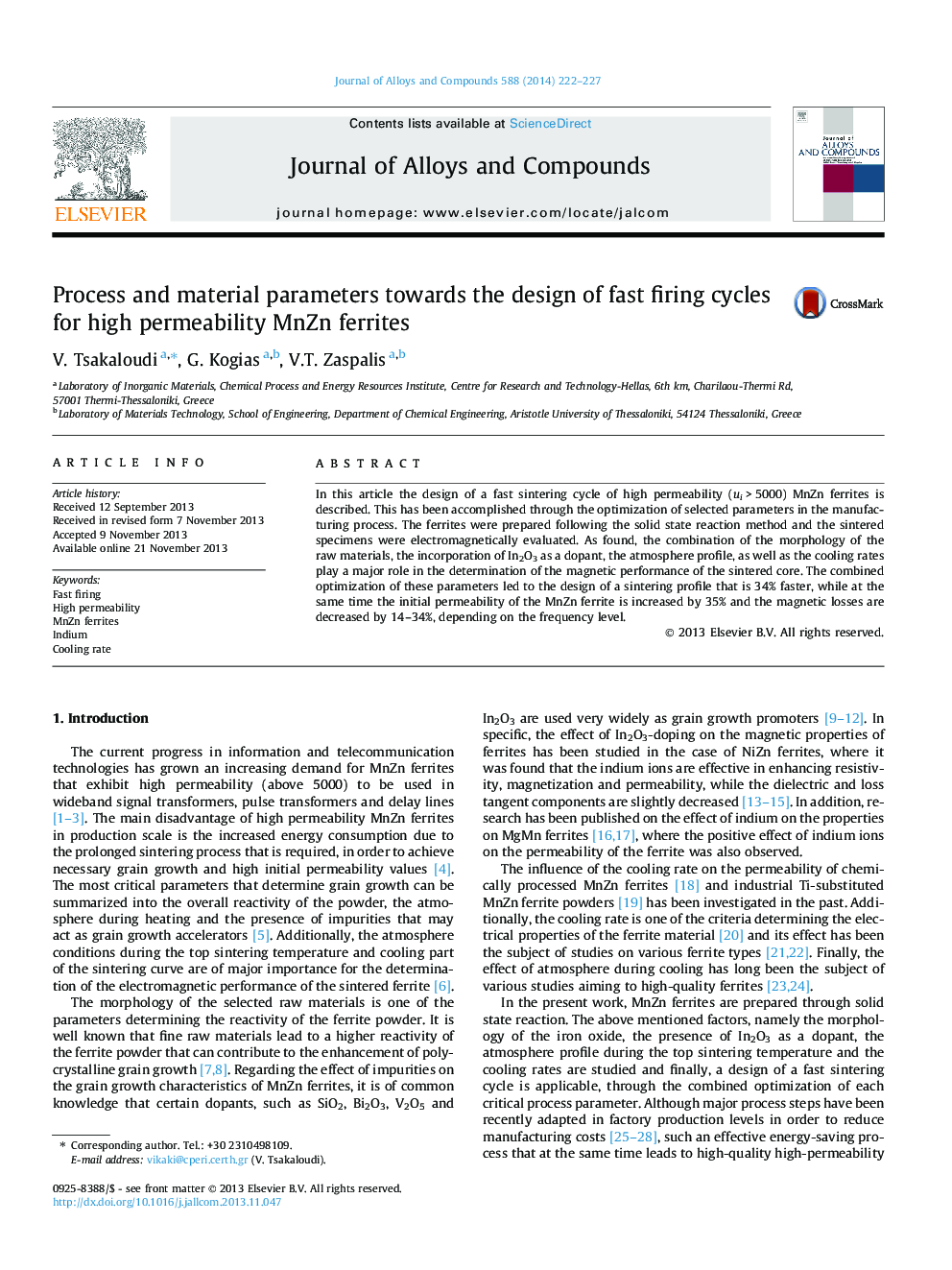| Article ID | Journal | Published Year | Pages | File Type |
|---|---|---|---|---|
| 1612173 | Journal of Alloys and Compounds | 2014 | 6 Pages |
•Fine Fe2O3 raw material induces the initial permeability through grain growth.•In2O3-doping enhances the initial permeability through solubility in the lattice.•Optimization of the cooling rates improves the magnetic properties of the ferrite.•Increased PO2 favors grain growth and initial permeability.•Best magnetic performance is achieved with a 34% shorter firing cycle.
In this article the design of a fast sintering cycle of high permeability (ui > 5000) MnZn ferrites is described. This has been accomplished through the optimization of selected parameters in the manufacturing process. The ferrites were prepared following the solid state reaction method and the sintered specimens were electromagnetically evaluated. As found, the combination of the morphology of the raw materials, the incorporation of In2O3 as a dopant, the atmosphere profile, as well as the cooling rates play a major role in the determination of the magnetic performance of the sintered core. The combined optimization of these parameters led to the design of a sintering profile that is 34% faster, while at the same time the initial permeability of the MnZn ferrite is increased by 35% and the magnetic losses are decreased by 14–34%, depending on the frequency level.
